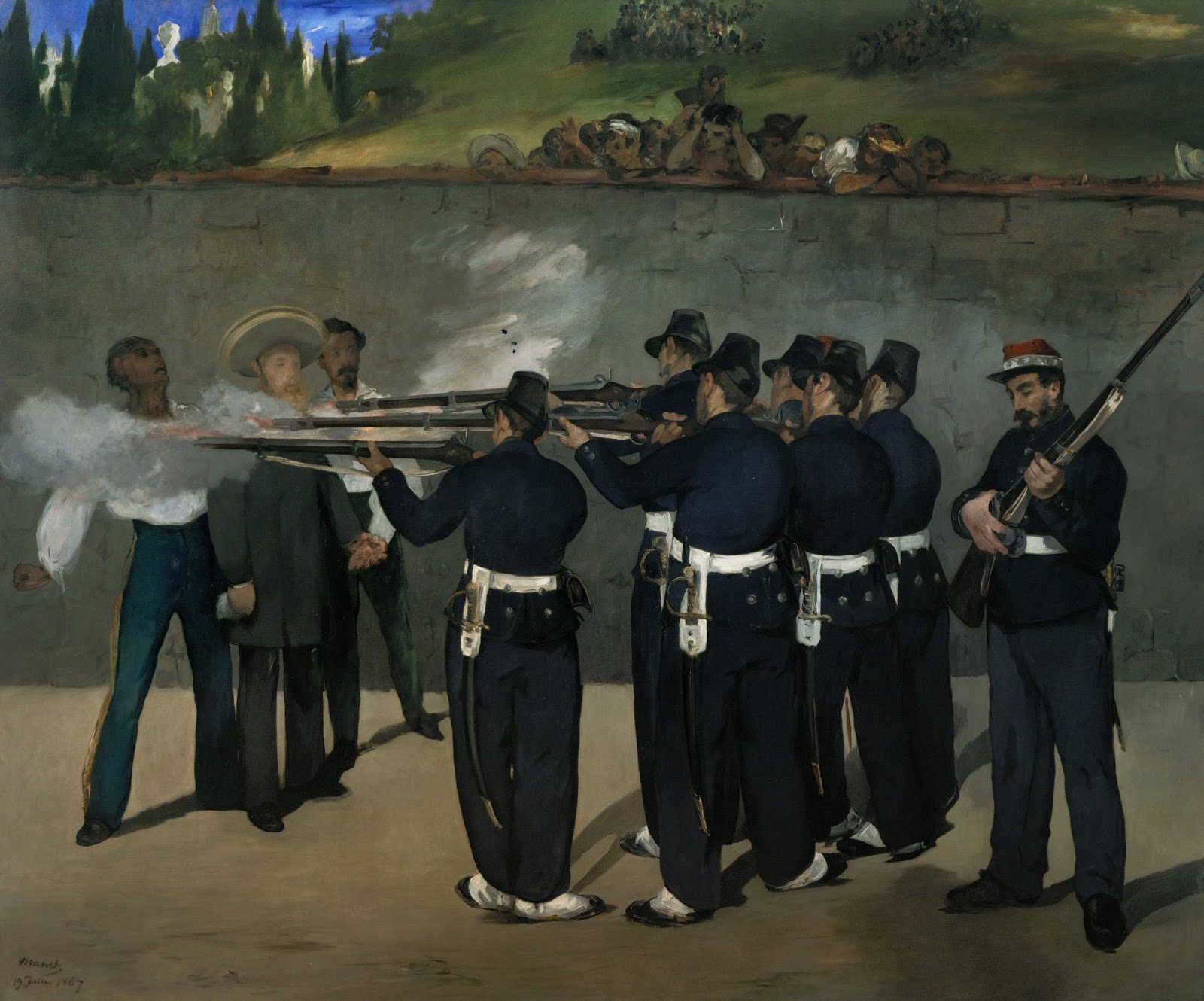Édouard Manet: The Execution of Emperor Maximilian (1868-1869)
(Kunsthalle Mannheim, Mannheim, Germany)
A painting by the French artist Édouard Manet (1832 – 1883). This painting shows the dramatic conclusion of the Second Mexican Empire (1863–1867). In early 19th century there was in Mexico a struggle between liberal and Conservative forces over power over the government and reform of laws. This struggle resulted in 1858 in open war between both powers (the War of the Reform). When Conservative forces were defeated in 1861 they fled the country but sought outside help. They found outside help in France when the new liberal Mexican President Benito Juárez suspended the loan-interest payments to foreign countries. Claiming that the the military adventure of France was a foreign policy commitment to free trade (in reality in wanted to extend its influence in Mexico), a French army landed in Mexico in 1862 and marched upon Mexico-city. Although the Mexican army managed to defeat the French army in the Battle of Puebla on 5 May 1862 (remembered by the Cinco de Mayo holiday), the French entered Mexico City on 7 June 1863. The new (conservative) Mexican government proclaimed a Catholic Mexican Empire. The crown of this new empire was offered to Archduke and Prince Ferdinand Maximilian of Austria who was heavily pressured by emperor Napoleon III of France to accept. Maximilian finally accepted his new crown and arrived in Mexico where he declared himself Emperor of Mexico on 10 April 1864. His reign proved to be short-lived as the liberal Mexican forces were not defeated and to make matters worse: the United States had won the civil war and started to support the liberal Mexican forces. Threatening with a full scale invasion by the US, Napoleon III quickly retreated his army in 1866 and left Maximilian to his fate. Maximilian refused to abandon his supporters but he was caught on 15 May 1867. Maximilian was brought before a court-martial sentenced to death. On 19 June 1867 Maximilian was executed together with generals Miguel Miramón and Tomás Mejía). This painting of the execution of Maximilian was politically sensitive and was never shown in France during the reign of emperor Napoleon III of France. painting from 1868-1869.
